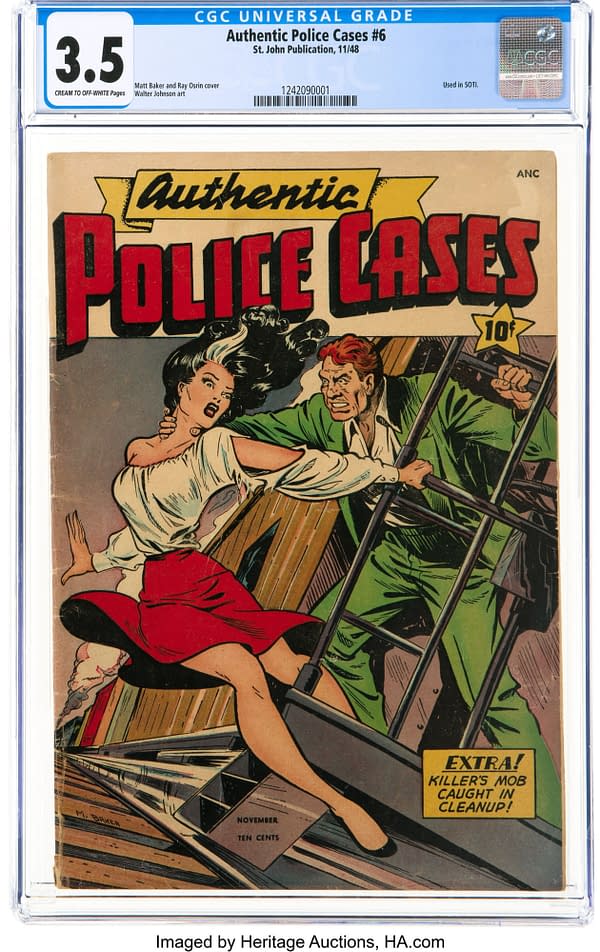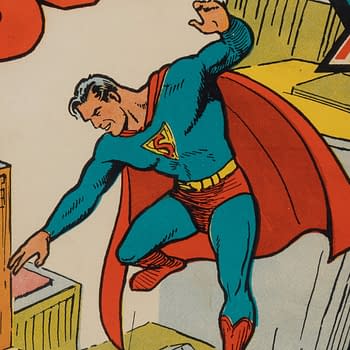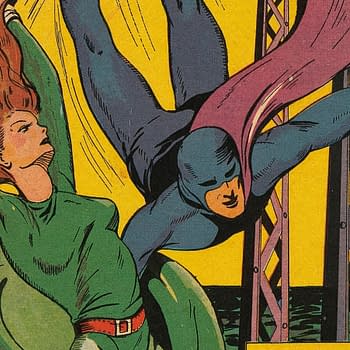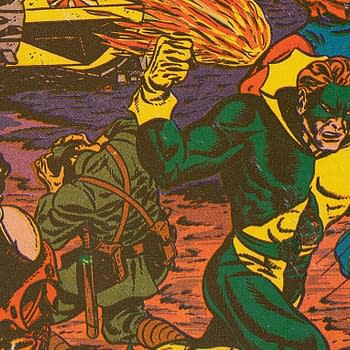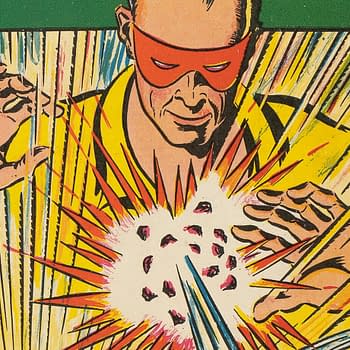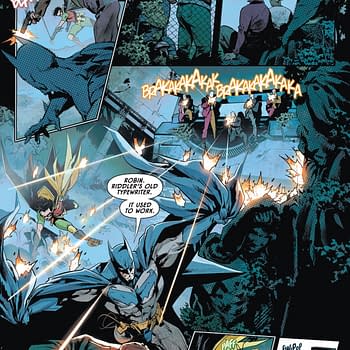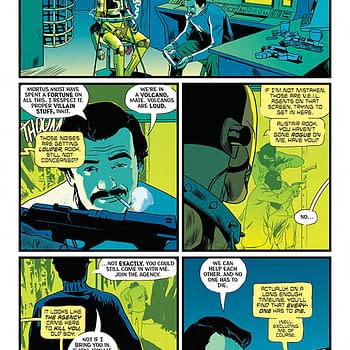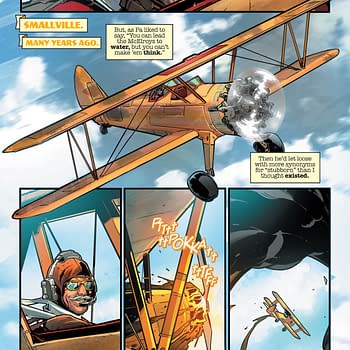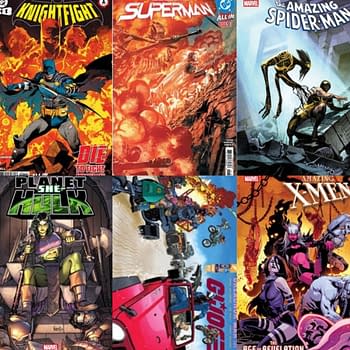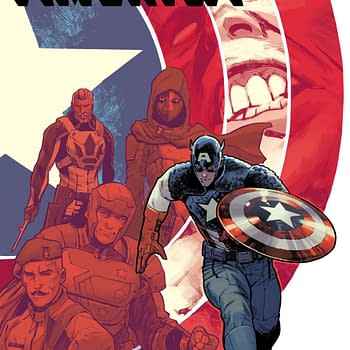Posted in: Comics, Heritage Sponsored, Vintage Paper | Tagged: Al Capone, Matt Baker, St. John Publications
Authentic Police Cases: Matt Baker & Al Capone's Influence on St. John
Was comic publisher Archer St. John's approach to Authentic Police Cases influenced by his 1925 abduction by notorious gangster Al Capone?
Article Summary
- Explore how Al Capone's 1925 threat may have shaped Archer St. John's publishing path.
- Discover Matt Baker's cover art for Authentic Police Cases #6.
- Uncover the St. John brothers' harrowing clash with Capone's criminal empire.
- Examine how moral panic in 1948 affected the Authentic Police Cases title.
The pre-Code era's true crime comic book genre stayed surprisingly true to its name. From long-running and legendary titles like Crime Does Not Pay to shorter but still-infamous series like Gangsters Can't Win, most titles that positioned themselves as true crime made an effort to chronicle the exploits of real-life criminals with at least some regularity. With a name like Authentic Police Cases, one might expect much the same from St. John's first non-licensed series, launched about six months after the publisher got into the comic book business with the likes of Ella Cinders and Mighty Mouse. But with rare exceptions (including an occasional one-page bio of historical criminals), Authentic Police Cases did not feature the kind of high-profile true crime stories that many of its competitors thrived on.
It's hard not to wonder if publisher Archer St. John's life experience influenced this editorial decision. As a newspaper editor and publisher in the 1920's, Archer and his brother Robert were terrorized by the notorious Al Capone himself for their newspaper coverage of the legendary mobster in that era. Even without regular appearances by the type of headline-making gangsters and killers often featured in the era's crime comics, Authentic Police Cases had a relatively successful run for a St. John comic book, starting in 1948 and ending with the arrival of the Comics Code. That's largely because of the talents of Matt Baker, whose first work on this title is the cover of Authentic Police Cases #6. A highly regarded and important Baker cover with inks by Ray Osrin, there's a copy of Authentic Police Cases #6 (St. John, 1948) CGC VG- 3.5 Cream to off-white pages up for auction in the 2024 July 18 The Matt Baker Comics Showcase Auction #40267 at Heritage Auctions.

Archer St. John and his brother Robert St. John had become newspapermen by the mid-1920s. With the backing of financial partners, the brothers founded the Cicero Tribune in Cicero, Illinois, with Robert as editor and publisher. A short time later, Archer founded the Berwyn Tribune in nearby Berwyn, Illinois, which he then operated himself. In 1925, Robert began to editorialize against the political and illicit influences that Capone was having on the town, with an exposé of a Capone-run brothel there stirring up a particular furor among the community. As a result, the brothel was burned down.
Opinions of Capone biographers vary on how this played out, but most accounts agree that it was the consequence of the enraged citizens of Cicero, and in particular, the work of a vigilante group run by Reverend Henry C. Hoover. As such, this was an action that Al Capone could not ignore. Meanwhile, with elections approaching in both towns that April, Archer was preparing to mount his own campaign against the Capone organization's political maneuvers.
This sequence of events prompted a violent response from Capone. On April 5, with local elections for city officials about to take place in both towns, Robert St. John was attacked and beaten by a group of Capone associates. Around the same time that day, Archer St. John was kidnapped at gunpoint and held captive for several hours. According to some sources, this move prevented Archer from publishing his final anti-Capone editorials on the eve of the election.
While he reportedly felt that outright killing the St. John brothers would create blowback that he couldn't control, Capone pressured the Cicero Tribune's financial backers to allow him to gain control of the paper. This compelled Robert to move to the Berwyn Tribune to work with Archer, but mounting financial pressures soon put an end to that as well. Capone had won, and both brothers moved on to endeavors. Robert St. John would continue to pursue journalism for most of the rest of his life. Leaving Chicago sometime after the Capone matter, both brothers bought farms in Connecticut. Archer became an advertising executive for Lionel sometime around 1930 (plus or minus a few years), and got into publishing, initially with Air News Publishing Co. in 1941 while seemingly still a Lionel executive. He was assigned to head the Chunking, China outpost of the Office of War Information in 1945.
Three years later, Archer St. John launched a true crime-style comic book that largely avoided the high-profile real-life criminals often featured by many other such titles. Even beyond that decision, St. John's approach to the series was cautious. 1948 was a peak moral panic year for the comic book industry, and many publishers responded by forming the Comics Code organization pre-cursor, the Association of Comics Magazine Publishers. While St. John didn't join the organization, he felt the heat many other publishers felt in 1948. In just a few months, Authentic Police Cases was showing up on local newsstand ban lists. And just at the time that Authentic Police Cases #6 was hitting newsstands, a Washington state reporter singled out Authentic Police Cases #5 with a cover of a "bare-kneed girl helping a convict shoot it out with an officer" in connection with a juvenile delinquent's reading material.
In reaction, Authentic Police Cases and Crime Reporter, which had just included Matt Baker's earliest St. John cover gigs, both ended in the same month. The next month, the company launched its first romance comic book, Teen-Age Romances, with a Matt Baker cover — altering the course of Baker's career and enabling St. John to find its footing in the process. While the short-lived Crime Reporter was gone for good, Authentic Police Cases returned to the newsstands some 18 months later in early 1950. The 1948-era crime comics moral panic furor had calmed down for the moment by that time. During the course of its 38-issue run 1948-1955, it would feature 28 covers by Baker.
Perhaps the most famous of these, Authentic Police Cases #6, is among Baker's best-known non-romance work for St. John. It should also be noted that a now-infamous interior panel showing a woman in lingerie by artist Walter Johnson from the interior story Human Cat Trapped by Death Gun Slugs was used by Fredric Wertham in Seduction of the Innocent in 1954.
It's difficult to imagine that Archer St. John's 1925 run-in with Al Capone didn't influence his approach to true crime at least a little, but Baker's arrival at the publisher in 1948 influenced the course of the company even more. An important moment in Matt Baker's career, there's a copy of Authentic Police Cases #6 (St. John, 1948) CGC VG- 3.5 Cream to off-white pages up for auction in the 2024 July 18 The Matt Baker Comics Showcase Auction #40267 at Heritage Auctions.
